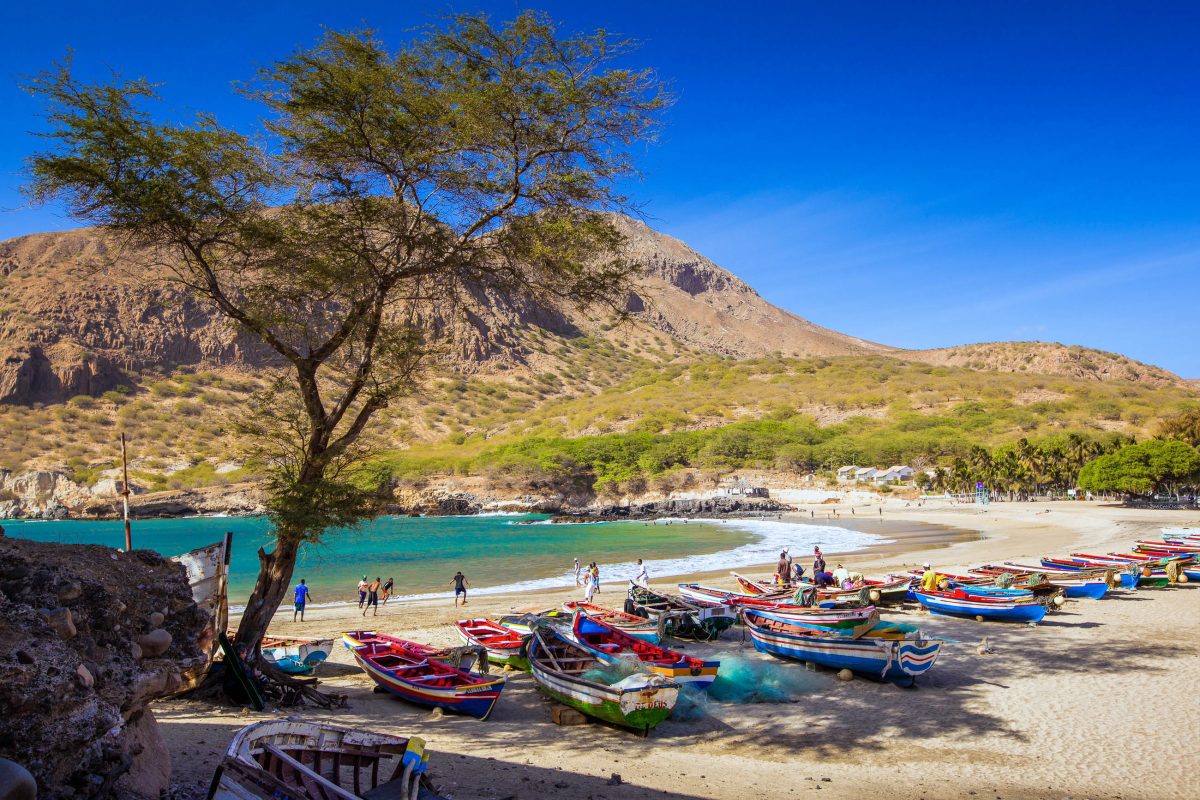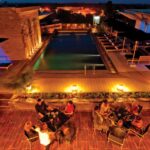While you have probably heard the name Cape Verde among talk of where the rich and famous get their winter sun, you might know why it is one of the best beach holiday locations year-round.
Strewn across an archipelago of ten volcanic islands off the west coast of Africa in the Atlantic Ocean, it is located near the equator and enjoys sunshine and temperatures above 25 degrees Celsius almost every day. It mixes sandy beaches and unique marine animals with volcanic peaks, and has a unique and fascinating culture.

Still not convinced? Here are eight reasons to add Cape Verde to your holiday destination list for 2020.
Idyllic Beaches
An island archipelago, it is little surprise that Cape Verde is home to some spectacular beaches. White sands descend into crystal blue waters, and you will also come across black beaches, which make for a striking contrast. While Cape Verde is a popular holiday destination, its beaches are not overrun, and it is relatively easy to find a quiet space to call your own.
Head to the islands of Sal and Maio for the most remote and unspoiled beaches.
Perfect Waves
If you are up for a bit more adventure than sunbathing and paddling, then you have come to the right place. Cape Verde is the perfect place to catch some waves as the water is warm, and the swells are large. You can catch rides up to 200 meters long. As a result, Cape Verde has become a popular international surfing Mecca. The high winds over the archipelago also make it ideal for windsurfing, and there is no shortage of places to hire equipment or take a class.
Start your surfing adventure at Ponta Preta, Mont Leao, Ponta do Sino or Santa Maria on Sal Island.
Unique Marine Life
Africa is known for its epic wildlife, and this remains true even on these remote islands, where you will find marine life that does not exist anywhere else in the world. Over 600 species of fish dwell in the area, including mantas and whale sharks, and there are also 17 species of whales and dolphins. The islands are particularly known for their turtles, and they are the largest nesting ground in the world for Loggerhead turtles, who lay their eggs at night between July and September.
Diving and Snorkelling are always fascinating on these islands, or jump on a whale-watching boat.
Volcanic Peaks
Cape Verde is comprised of a number of volcanic peaks, the most famous of which is Pico do Fogo. This is an active volcano that last erupted in 2014, and the damage caused by its lava can be seen in the surrounding landscape among the greenery. Hike up to the peak, which is 2,829 meters above sea level, and get amazing views out over the islands. Also, make sure to visit the village of around 1,000 people that is situated within the crater itself!
You will also find great mountain trails up to the peaks of Santo Antao and Sao Nicolau.
Salt Pools
One of the most unique things that you will encounter in the Cape Verde landscape is Pedra de Lume. Located on Sal, a ring of low mountains encloses a series of saltpans. Each is a different color, depending on the stage of the salt formation, and separated by stone walls. Together they create a sweeping geometric landscape of blues pinks and greens.
Just sit around and admire the beauty of the landscape, or go for a salty dip in one of the pans.
Unique History
Cape Verde has a unique culture, as it was actually uninhabited until Portuguese and Genoese sailors landed there in 1456. The Portuguese gradually colonized the island, planting their first settlement, Cidade Velha, in 1462, and then made it a central hub in their slave trade, transporting many Africans to the island. Slavery was only abolished there in 1878, after the bloody suppression of an uprising.
Explore the history of the island through its architecture, starting with the Fortaleza Real de San Felipe, which is complete with cannons.
Local Culture
The culture of Cape Verde is a mix of African and European influences that is fascinating and delicious. Start by eating your way through the islands, sampling the ridiculously fresh seafood, including lobster, tuna and octopus, cooked in Portuguese, Creole, and French styles. Then laze away while listening to Cape Verde’s distinctive Morna music, which offers a lilting, rhythmic sound. Complete your day by heading to the Mercado de Sucupira, where you will find the best local clothes and crafts.
If you want to find your food and music in one place, schedule your visit to coincide with one of Cape Verde’s many street festivals, such as the Baia das Gatas full moon festival in August, or the Santa Maria festival in September.
The End of the World
Depending on how you read your geography, Cape Verde’s island of Santo Antao is the most westerly point in Africa, making it pretty much the end of the world. The island can only be reached by water, and when you arrive it feels like a desolate place. Its rocky interior rears up from the water, and the island is covered in sprawling coffee plantations. It is home to only around 40,000 people, most of whom live in Porto Novo.
Another reason to visit Cape Verde? Look out over the sea from the west coast of the island and bask in the feeling of isolation.
Travel Essentials
- Language: Portuguese, though Creole is also widely spoken
- Currency: Cape Verdean Escudo (CVE), around 100CVE to US$1
- Religion: 99 percent Catholic
- Capital: Praia on Santiago Island
- International Airport: Amilcar Cabral on Sal Island
- Safety: Cape Verde is considered safe, with pickpocketing the most common crime committed against tourists
- Temperature: The daily average temperature ranges from 26 (79) to 30 (87) degrees though it can reach as high as 40 (104) in June and July
- Rains: August to October is the peak rainy season
Cape Verde is known to be one of West Africa’s hidden gems for its natural wonders and beautiful attractions. We know that most of you have Cape Verde in your bucket list in 2020, however, if you are looking for more reasons to convince yourself to go… we hope these reasons will help you decide as you book the next flight out to Cape Verde.
Want to visit Cape Verde this new year? Let us know why you want to visit this West African gem in 2020.






